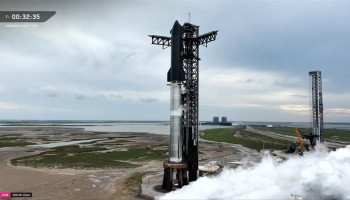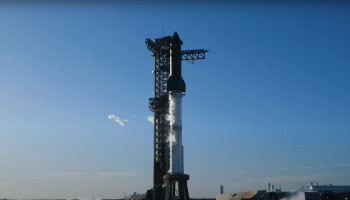
The SpaceX Starship rocket has put a stop to failures and achieved two long-sought milestones with the successful completion of its tenth test flight.
The 403-foot craft blasted off from Starbase, climbing on 33 Raptor engines that ran on methane at 7:30pm ET.
The 232-foot-tall Super Heavy booster successfully splashed down in the Gulf of Mexico, testing a novel manoeuvre by purposefully turning off its main landing engines and using backup engines.
Eight simulated Starlink satellites were released when the upper stage of the starship entered space and opened its Pez-style payload door for the first time.
The rocket's intended use in satellite deployment and lunar missions depends on this capability.
Before steering the vehicle towards the Indian Ocean, where it splashed down and tipped over, the company also successfully re-ran one of the Raptor engines in space.
Important information about the rocket's heat shield tiles, which are made to withstand extremely high temperatures during atmospheric reentry, was obtained during the test flight.
In order to assess performance, SpaceX removed tiles from particular areas and tested new metallic and actively cooled tiles.
In contrast to earlier flights, the upper stage successfully finished the test without losing contact with SpaceX engineers.
The Starship programme, which intends to deliver people and supplies to Mars and fulfil NASA's goal of putting humans on the moon by the middle of 2027, has advanced significantly with this accomplishment.















